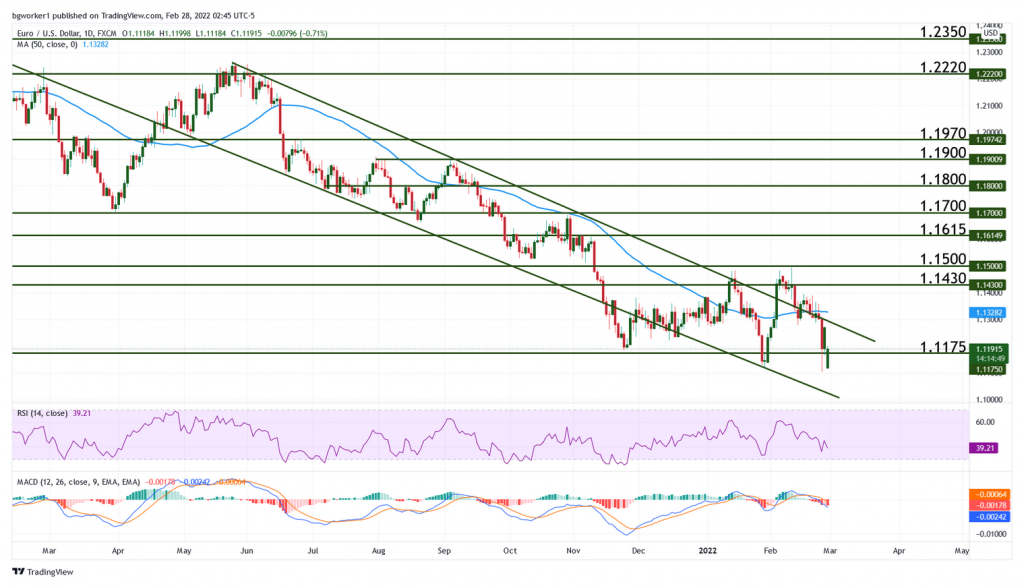Bank of Russia Raises Rates to 20%, Ruble in Shambles
West Adds More Sanctions, Ruble Collapses to Fresh Lows
by Bogdan Giulvezan
In an attempt to shield the country from Western sanctions, the Bank of Russia decided to hike the interest rate from 9.5% to 20%. This is the highest it’s been in almost two decades, as these levels were last seen in 2003.
The Ruble dropped as low as 119 per US Dollar, breaking the previous low at 90. Currently, it is trading at 111 but the volatility is sky-high so these numbers can change in minutes.
The safe-haven US Dollar had the most to gain, with the US Dollar Index (DXY) reaching a high of 97.42, way above Friday’s closing price of 96.54. The greenback also made notable advances against its other peers such as the Euro and the Pound.
Key Events for the Week Ahead
Of course, the war in Ukraine will steal almost all headlines this week, but apart from that, traders should be aware of several releases:
Tuesday at 3:00 pm GMT the U.S. Manufacturing PMI comes out, followed two days later at the same hour by the Services PMI. These surveys act as leading indicators of economic health but their impact may be muted, given the current situation.
Fed Chair Powell will testify Wednesday at 3:00 pm GMT before the House Financial Services Committee and a day later at the same time, he will testify before the Senate Banking Committee. The topic on both occasions will be the Semi-Annual Monetary Policy Report. Volatility may ensue, depending on the Chairman’s tone and answers.
The most important release of the week will be the U.S. Non-Farm Payrolls report, scheduled for Friday at 1:30 pm GMT. The expected change is 400K (previous 467K) but markets are now pricing in a 95% probability of a 25 bps rate hike. Speculation of a 50 bps hike has subsided due to the Russian invasion.
Technical Outlook – EUR/USD
This week the market opened with a gap: Friday’s close was 1.1271 and Monday’s open was 1.1118. The reason is most likely the Russia – Ukraine war but the gap is not closed. Considering that more often than not, these gaps get closed (i.e. price goes back to where the market should have opened), we can expect the pair to climb into the 1.1270 area.
Of course, in times of war, chart behavior and “normal” patterns can be erratic and less accurate but it’s worth noting that historically, gaps tend to be closed. The US Dollar should be able to continue to gain against its major counterparts but keep in mind that any pair can turn on a dime, considering the times we’re living in.
